Презентація на тему «Pollution in Ukraine»
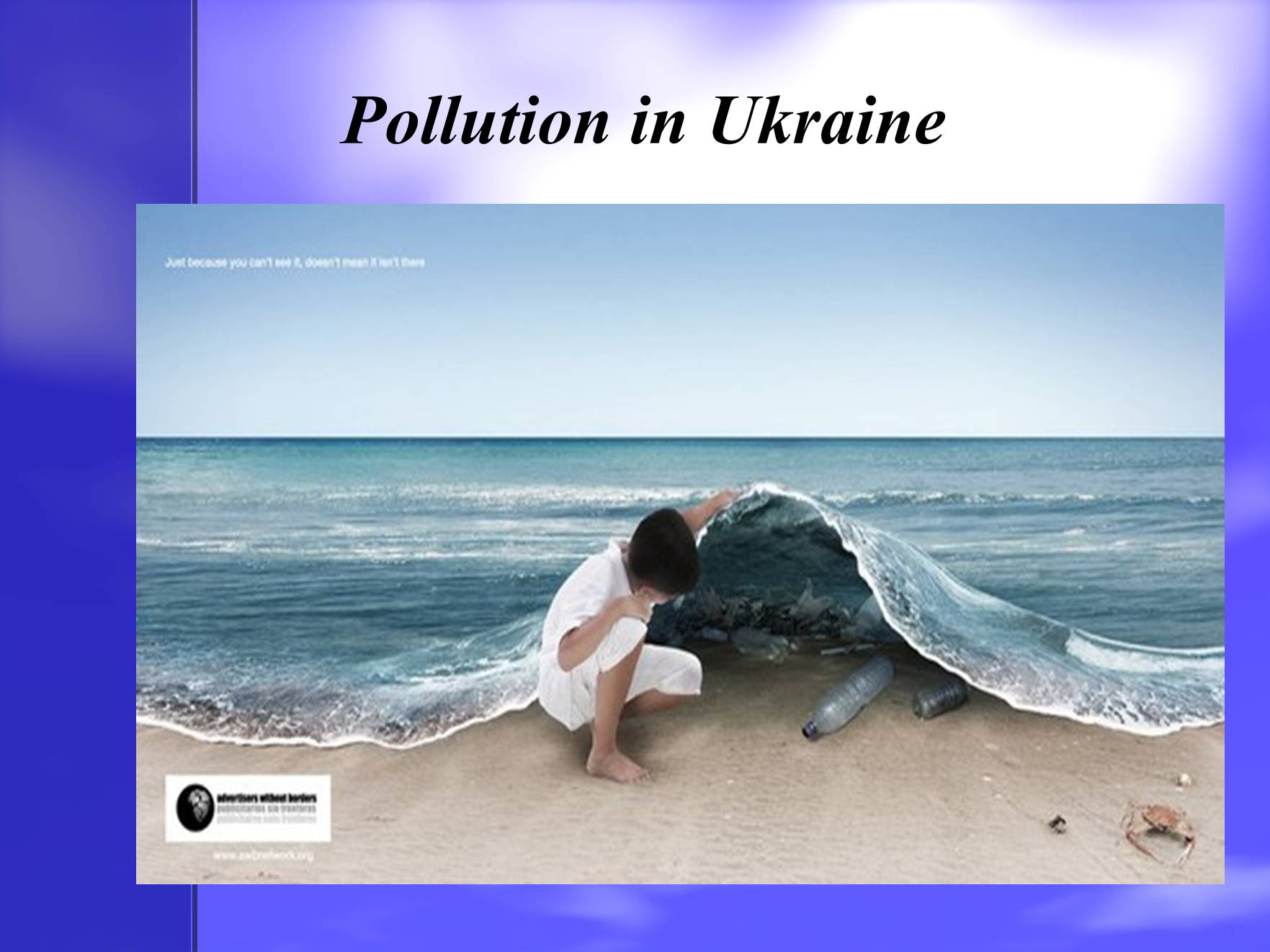
Pollution in Ukraine
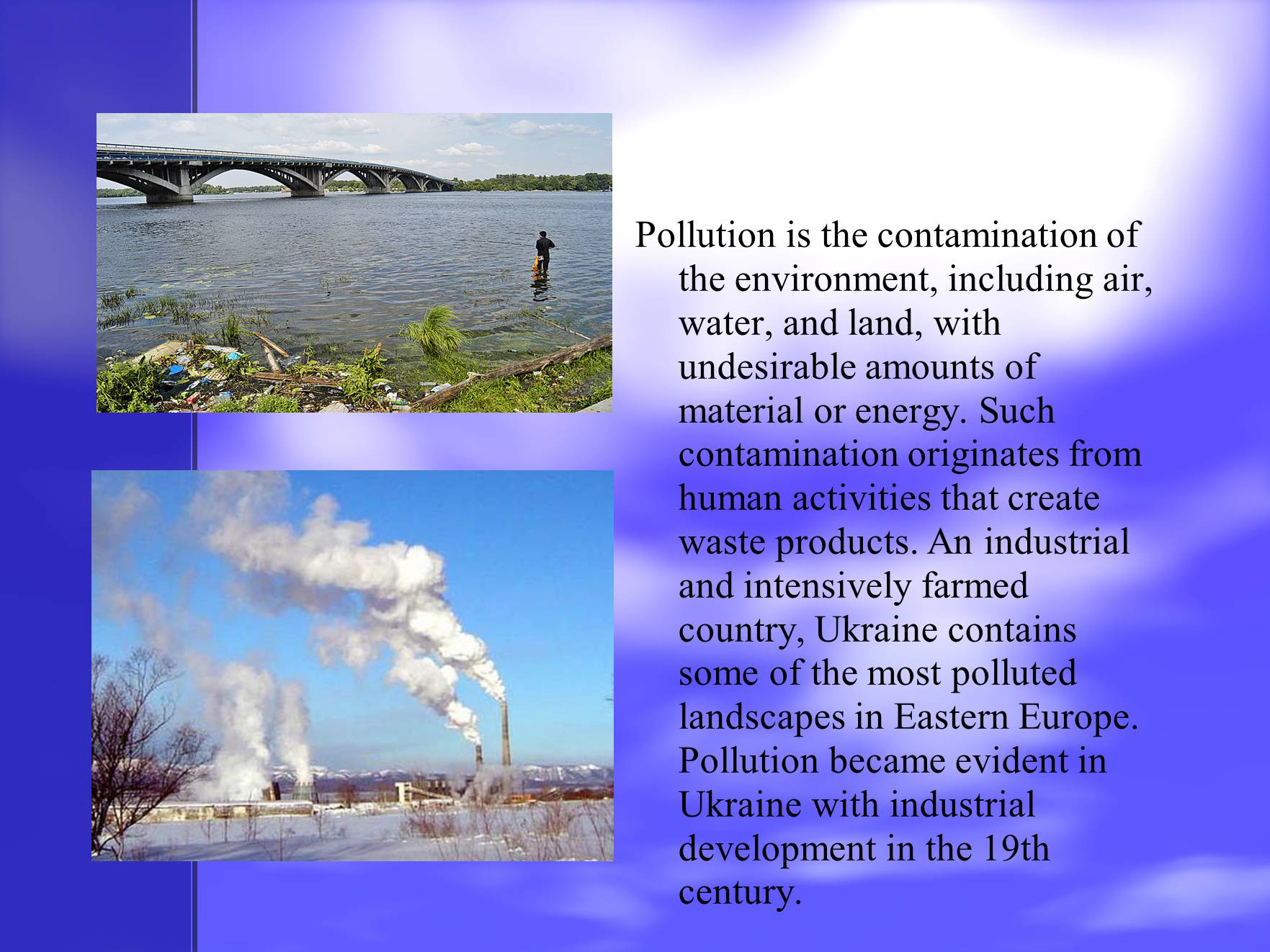
Pollution is the contamination of the environment, including air, water, and land, with undesirable amounts of material or energy. Such contamination originates from human activities that create waste products. An industrial and intensively farmed country, Ukraine contains some of the most polluted landscapes in Eastern Europe. Pollution became evident in Ukraine with industrial development in the 19th century.
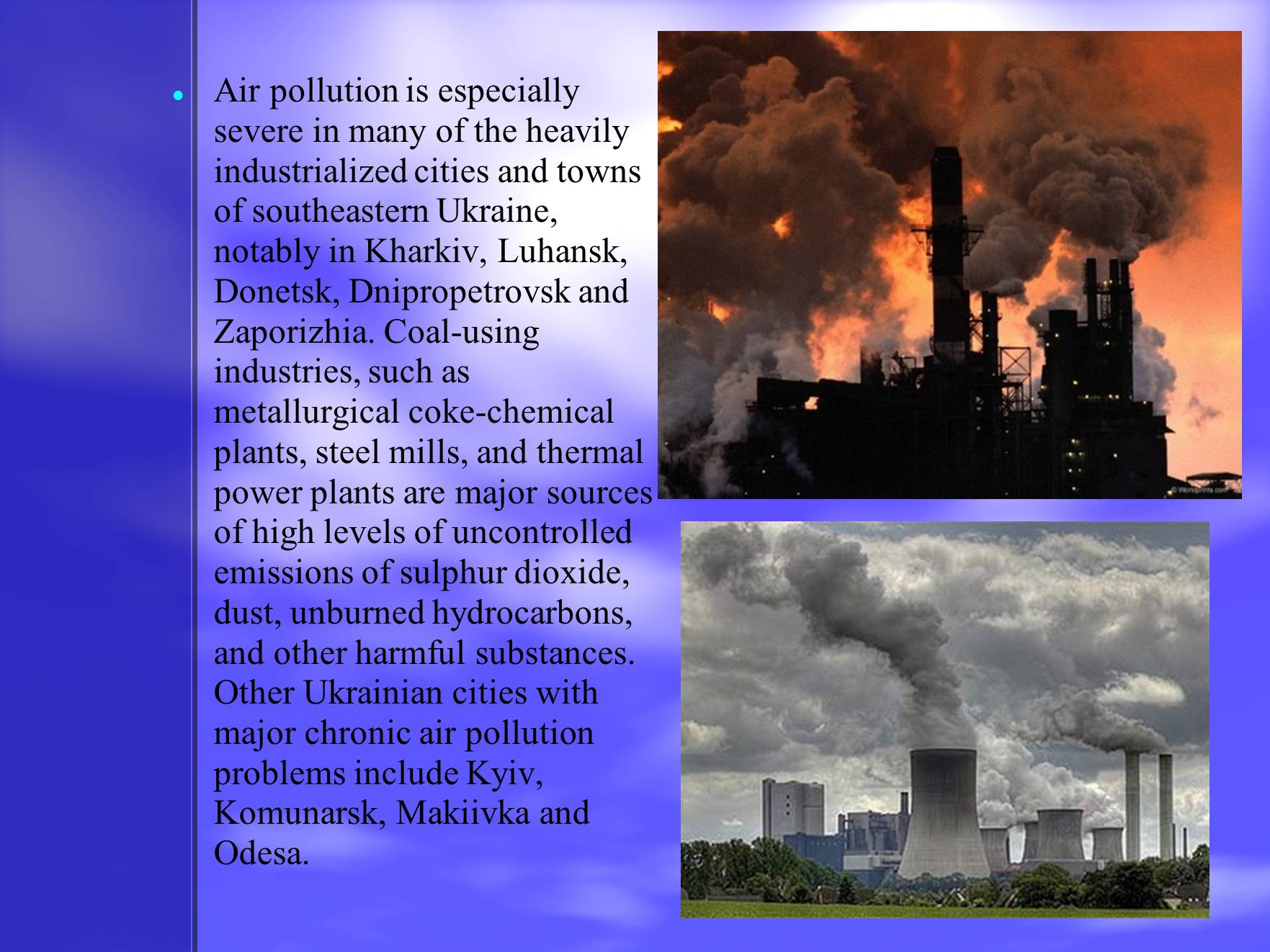
Air pollution is especially severe in many of the heavily industrialized cities and towns of southeastern Ukraine, notably in Kharkiv, Luhansk, Donetsk, Dnipropetrovsk and Zaporizhia. Coal-using industries, such as metallurgical coke-chemical plants, steel mills, and thermal power plants are major sources of high levels of uncontrolled emissions of sulphur dioxide, dust, unburned hydrocarbons, and other harmful substances. Other Ukrainian cities with major chronic air pollution problems include Kyiv, Komunarsk, Makiivka and Odesa.
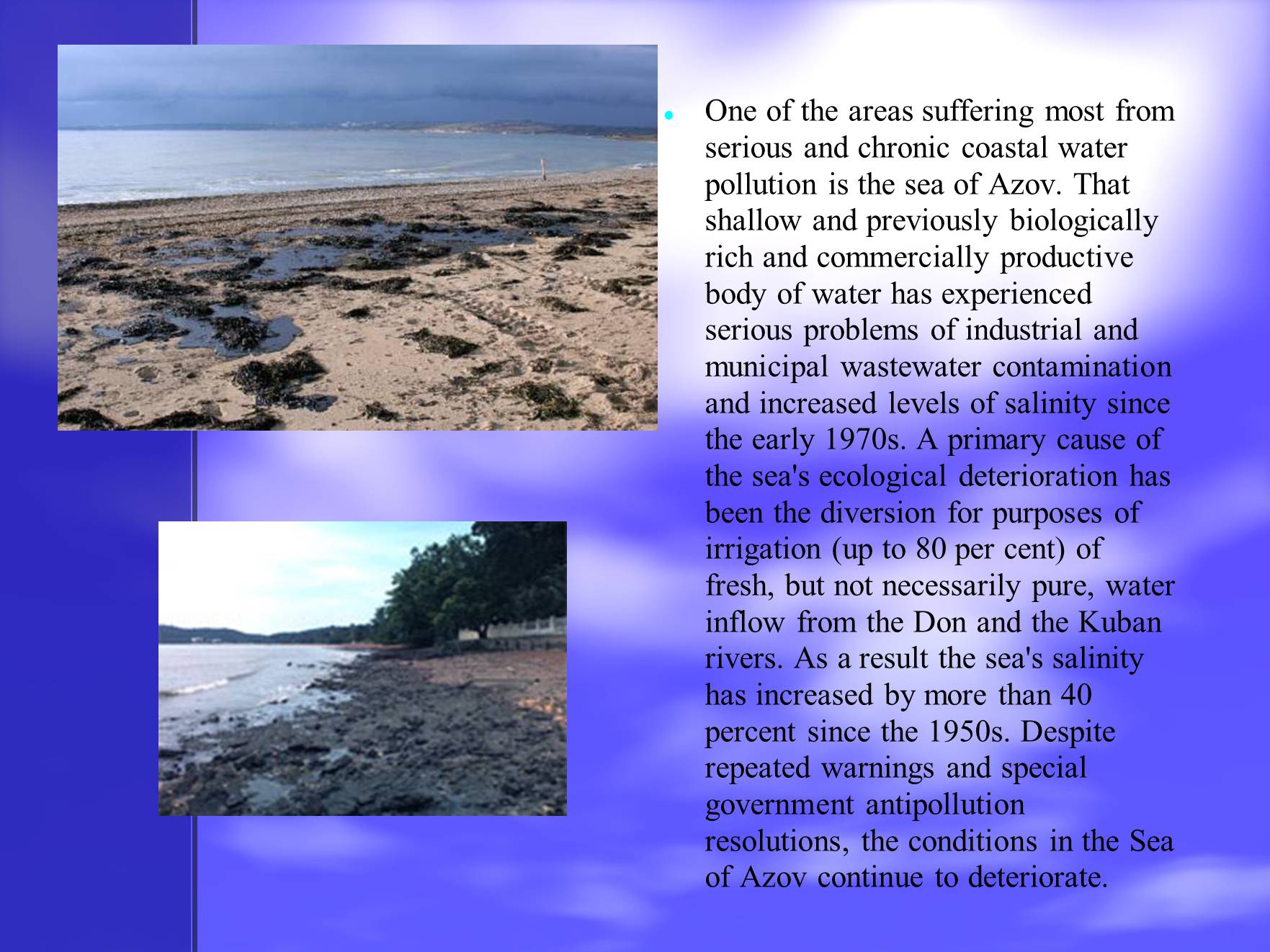
One of the areas suffering most from serious and chronic coastal water pollution is the sea of Azov. That shallow and previously biologically rich and commercially productive body of water has experienced serious problems of industrial and municipal wastewater contamination and increased levels of salinity since the early 1970s. A primary cause of the sea's ecological deterioration has been the diversion for purposes of irrigation (up to 80 per cent) of fresh, but not necessarily pure, water inflow from the Don and the Kuban rivers. As a result the sea's salinity has increased by more than 40 percent since the 1950s. Despite repeated warnings and special government antipollution resolutions, the conditions in the Sea of Azov continue to deteriorate.
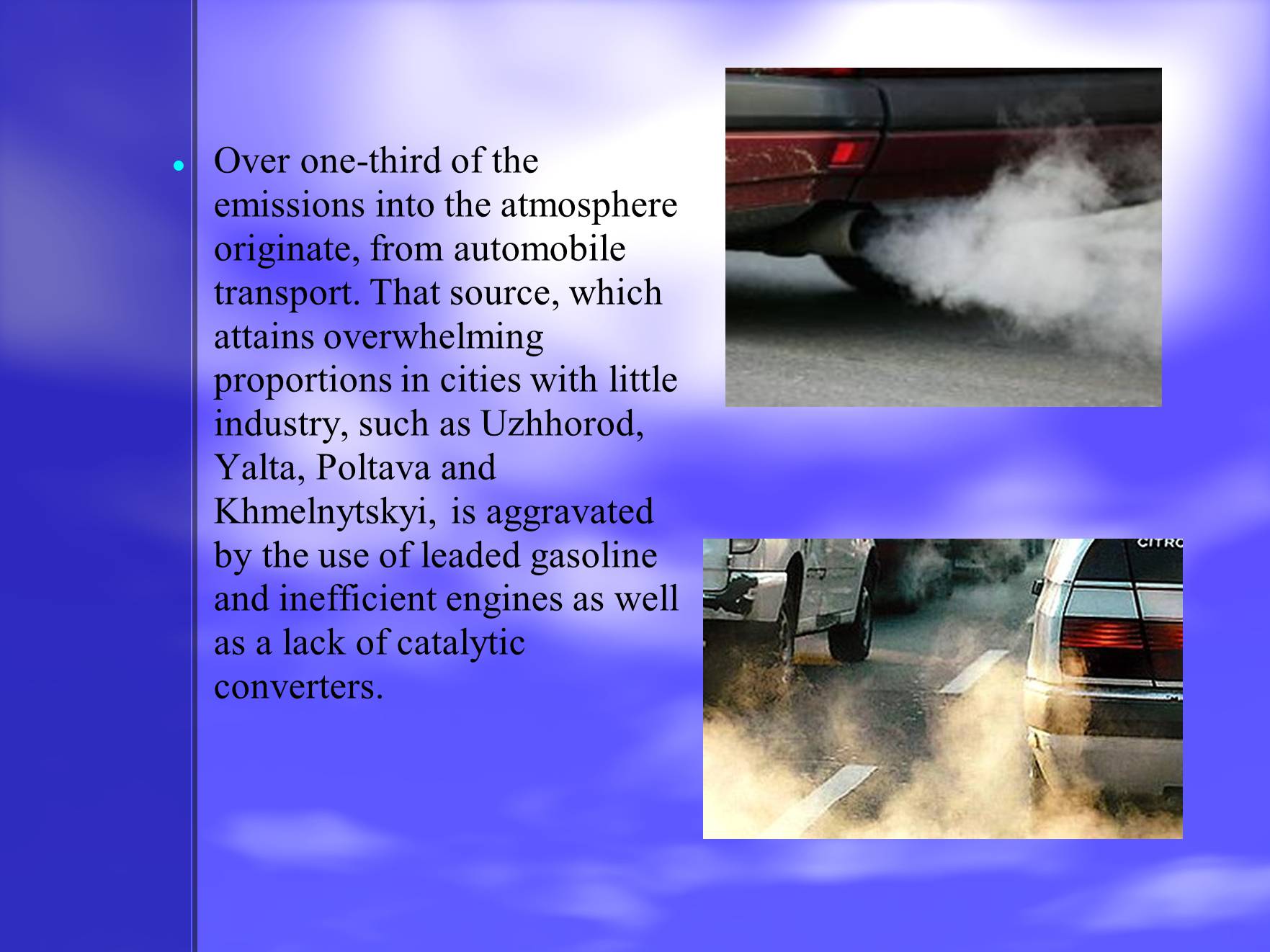
Over one-third of the emissions into the atmosphere originate, from automobile transport. That source, which attains overwhelming proportions in cities with little industry, such as Uzhhorod, Yalta, Poltava and Khmelnytskyi, is aggravated by the use of leaded gasoline and inefficient engines as well as a lack of catalytic converters.
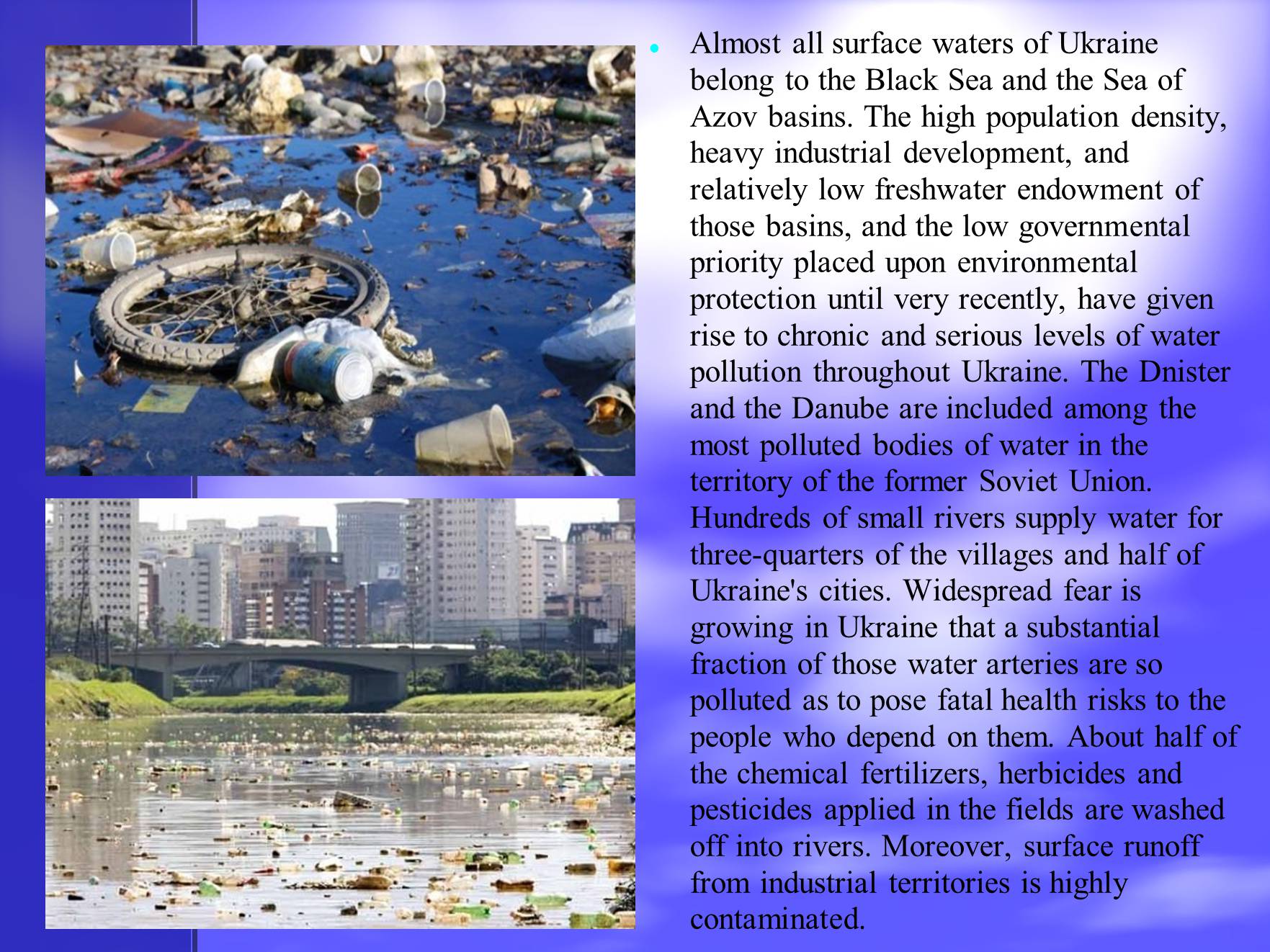
Almost all surface waters of Ukraine belong to the Black Sea and the Sea of Azov basins. The high population density, heavy industrial development, and relatively low freshwater endowment of those basins, and the low governmental priority placed upon environmental protection until very recently, have given rise to chronic and serious levels of water pollution throughout Ukraine. The Dnister and the Danube are included among the most polluted bodies of water in the territory of the former Soviet Union. Hundreds of small rivers supply water for three-quarters of the villages and half of Ukraine's cities. Widespread fear is growing in Ukraine that a substantial fraction of those water arteries are so polluted as to pose fatal health risks to the people who depend on them. About half of the chemical fertilizers, herbicides and pesticides applied in the fields are washed off into rivers. Moreover, surface runoff from industrial territories is highly contaminated.

take care of the Earth)